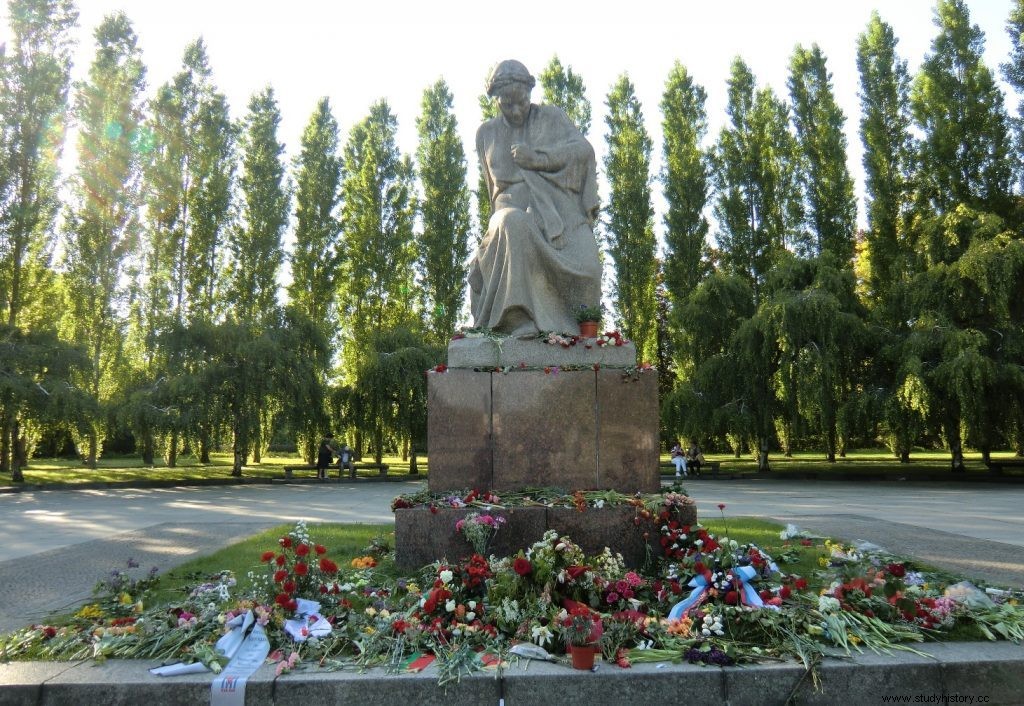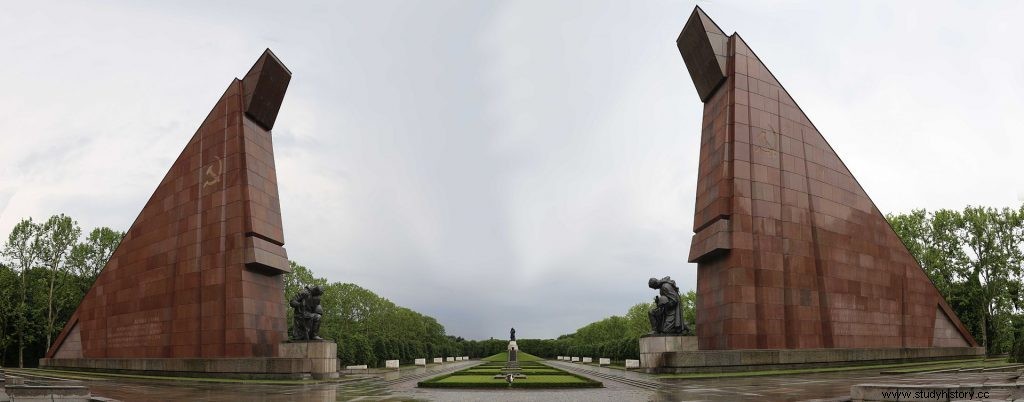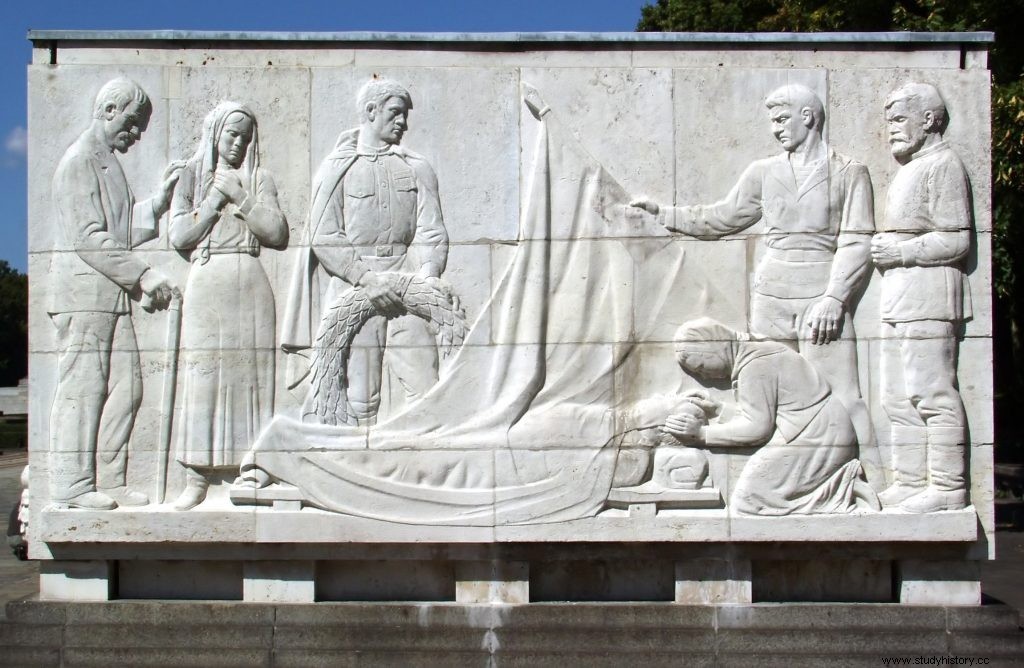The battle of Berlin was one of the hardest of the war in Europe and one of the most anticipated by the Soviet army. After four years of long struggle, they finally reached the capital of their enemy. The battle marked not only the end of the war in Europe, which would end just a few days after the surrender of the last SS troops in the Reich capital, but also the supremacy of the Russian bear in all of Eastern Europe. Q>
From Stalingrad in 1943 to the final victory of May 9 in Berlin, the Red Army had been chaining a series of great operations and great victories. This long fight had made it one of the greatest ground war machines in history.
To commemorate the beginning and the end of the victory, the Soviet Union erected its two largest war memorials:the one in Stalingrad and the one in Berlin in Treptower Park
This memorial is far from the only one that the Soviets erected in the German capital, but it is the largest and it is also where the veterans of the former Soviet republics celebrate their victory in the great patriotic war every year.
How to get to the Treptower Park Soviet Memorial
To access Treptower Park you must take the S-bahn to the stop of the same name. The station is very well connected as it is one of the stops on the Ringbahn, the circular line that runs through the center of the city. The lines that stop there are S41, S42, S8, S85, S9. You can consult the complete transport network HERE.
Opening hours
The monument is accessible throughout the day as it is a park. However, its access is not recommended after sunset because it is not illuminated.
Visit the Treptower Park Soviet Memorial
The Soviet monument in Treptower Park was erected between 1946 and 1949 to commemorate the end of the war in Europe. It is a tribute to the sacrifice of the Soviet soldiers and the 15 republics that led to the defeat of Nazism.
In order to make clear the total defeat of Nazism and the supremacy of communism over this ideology defeated by arms, the memorial was built using recycled construction materials from the new Reich Chancellery, the impressive building in central Berlin where Hitler had his office since 1939 and where the bunker where he committed suicide on April 30, 1945 was located.
As soon as you enter through either of the two entrance arches, you can already see the solemnity of the place. In the inscription on the arch it says:“Your great heroic deeds are immortal. Your glory will survive for centuries. Your homeland will always remember you»

Once past the entrance, the visitor walks through a tree-lined corridor to the statue of a woman who represents the motherland Russia, who looks sad at the loss of her children. From here, you can turn inside the monument.

The visitor will have to climb a slight slope, gradually approaching two monumental red stone flags, which are tilted as a sign of respect and under which are two veteran soldiers with their knees on the ground and their heads down. .

Once you reach that point, you can finally access a terrace from where you can see the interior of the memorial, which has 5 flower beds under which 4,800 soldiers who fought in the Battle of Berlin are buried. Behind these parterres, the memorial is dominated by a hill on which a large bronze statue was placed, a man with a girl in his arms.

The man symbolizes the red army, which stands on a sword resting on a broken swastika on the ground. The girl symbolizes Europe, a defenseless being that has been saved by the Soviet Union.

The path that leads to the statue is lined with 15 stone sarcophagi, one for each Soviet republic and where you can see reliefs that narrate what is known to the Russians as the Great Patriotic War.

